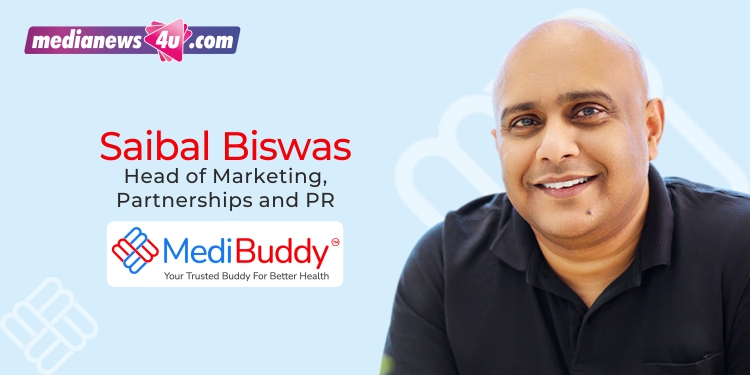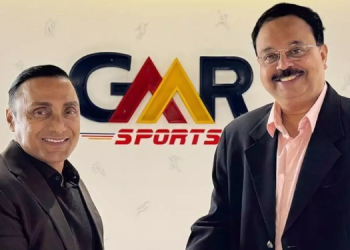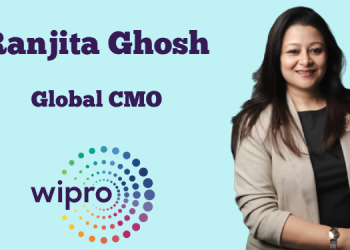In conversation with Medianews4u.com, Saibal Biswas, Head of Marketing, Partnerships and PR at digital healthcare platform MediBuddy, speaks about the latest campaign on mental health, previously launched and ongoing campaign featuring ambassador Amitabh Bachchan, largest segments of acquisition, offerings driving growth and more.
Can you talk about the #LoseTheMentalWeight Campaign and the thought process that went behind it?
We wanted to recognise and normalise the conversation around mental health; that it requires as much attention as physical health. If you look at the statistics, there are a lot of people who don’t even recognise the status of their mental health and seek a solution.
While we were going through our internal studies, we understood that a significant number of the population in the country is struggling with mental health issues. Most of it can be attributed to the hectic stress they are facing on a day-to-day basis. At the same time, there is also a stigma associated. One part is that they are not aware of the issues and second one is their inhibition in seeking medical help. We wanted to address these issues in the campaign.
We are also coming up with a solution to tackle the taboo attached – technology enabled online video consultation, where people can do consultation in a safe, secure and private environment available 24×7.
How are you planning to amplify the campaign?
We are primarily going to amplify the campaign through social and digital media backed by a bit of data-driven marketing. The brand spend will primarily be on YouTube and social media platforms.
In July 2023, you launched a series of campaigns featuring brand ambassador Amitabh Bachchan. How was the consumer reaction to the campaigns and how has it helped in brand growth?
We are overwhelmed by the positive response for the campaigns series; it was beyond our expectations. It started with the objective of growing the category of online consultations. At the same time we also wanted to grow our business and all the brand parameters. Online video consultation has grown compared to the average run rate and we are still growing 30 to 32 pc month on month. The campaigns are still live and we are consistently spending on the campaigns.
We do brand tracks quarterly. We track a sample set of our target audience to understand how our brand parameters are growing. Post this campaign, when we looked at the awareness, consideration and preference, everything has increased between 20 and 25 pc. It’s been three months. The intensity of spends might vary but it’s a campaign which is ‘always on’ for us. As we have nearly 10 campaign films, we can keep refreshing the campaign.
We also measure the quality of both the creative and brand reach. In all these we are getting top box scores. Consumers are resonating with the campaign which is translating into the brand lift.
Which are the service categories that are growing for the brand post pandemic?
We have been growing rapidly on health checks and diagnostics. This can be attributed to the market growth. The pharmacy category (online medicine delivery) is also growing at a fast pace, again due to the market growth. We had seen high growth during the pandemic for online doctor consultations, which came down a bit. Post the intervention we are seeing those figures come back which is very encouraging.
In diagnostics, we are growing slightly faster than the category because of the corporate base which we have already established. Annual health check-up is an awareness-driven service; a lot of traction happens there as well. People are getting more health conscious in general.
Another category which is growing business is the end-to-end surgery care business, which has almost doubled. For us the fastest growing category is online doctor consultation.
Is there space for all players now, given that there is intense competition? Especially in the space of online medicines and doctor consultations?
If you look at the online doctor consultation as part of the overall consultation, it is minuscule. I believe over a period of time, online consultation will grow. Imagine you are sitting in a small village in Bihar and if there is lack of access to a doctor. You can’t make a qualified specialist be present there for a long time. Online consultation will grow as there is a need and also there are government initiatives which will foster the growth.
When it comes to online medicine delivery, companies have invested in terms of awareness and it has helped in driving the category’s growth. Most of the pin codes are covered by the prominent players. There are different choices available for the consumers. At the same time, where you need a medicine urgently, online services might not be able to deliver it when required. That’s where the neighbourhood pharmacy comes in. That’s the reason why players are competing on price to grab market share.
Having said that, we will see more players coming in. Given the size of the (pharma) industry, online medicine delivery numbers are not big. Hence there is enough space for other players to come in. I hope that other players also invest in creating awareness on online doctor consultation. That’s when the awareness and adaptation will grow.
Unlimited consultations were the message with AB. How has that taken off? How is it feasible at the back end and is it a way to keep the consumer hooked to Medibuddy?
With Amitabh Bachchan, last year we tried pushing a product ‘Medibuddy Unlimited Doctor Consultation’ which is called Medibuddy Gold. It provides unlimited doctor consultation online. During the pandemic period, people have already accepted online consultation services and we had a notion that if you provide unlimited services at a certain price point, people will adapt to that product.
We didn’t witness traction as expected, because the category wasn’t created with a strong base. We needed to educate the consumer about the key benefits like the doctor’s availability 24×7, availability in over 16 languages etc., which was done at a later stage. As the category creation never happened initially, we received a muted response. We have corrected that and it is witnessing the growth as expected now.
We are working on it from the demand side. On the supply side, we are ensuring that we are building a strong network of doctors, clinics, diagnostic centres, and other third party or pharmacy who can do the last mile delivery. We will have to balance all these with a very intuitive, reliable and trustworthy consumer experience.
What is the percentage of repeat customers? What have you done to retain them and realise better lifetime value?
The need for healthcare is a once in a quarter phenomenon, unless you have very young kids. Typically, we see 15 to 20 pc our consumers repeating within three months.
We are sort of providing all services under one roof, which means that a part of our retention journey starts from understanding the profile of the consumers – from age to demographics, medical condition for which they have sought help, etc. Then we try to be a positive enabler and proactively provide them with solutions in healthcare they are seeking. An example would be, if a consumer has done a health check up and there is some variation or marker which requires further medical attention, we would proactively follow up on doctor consultation. The core idea is to provide value to consumers without being intrusive.
What are the primary acquisition drivers?
We are slightly different from other players. We are very strong in the corporate space. Hence, a bunch of consumers have access to Medibuddy health and wellness either provided by the corporate or through an insurer-funded wallet. Hence, by default, they are my customers. I don’t have to pay a lot for a retail consumer acquisition.
Our primary acquisition channel is corporate followed by our tie-ups with the BFSI players (we have tied up with all the BFSI players to sell our health and wellness packages and bundled services). Then comes insurance, where we do our pre-medical insurance health checks. Then the pure retail consumer business, where we acquire consumers through digital channels and affiliates.
Can you talk about the number of cities the company operates in? How are responses from urban vs rural?
We are actively trying to strengthen our networks. Right now we are present in 2,000-plus cities that would have around 18,000 pin codes where we deliver online pharmacy products. If you look at the diagnostic or labs, it will be 15,000 pin codes. As we are very strong in the corporate channel, currently 70 pc of our business comes from urban and the rest from rural.
Can you talk about the ad and marketing budget for the brand?
We generally spend 5 to 7 pc of our GMV (Gross Merchandise Value) for both media and non-media spends. Earlier it used to be higher, now we have chosen to operate in this bracket, primarily because we need to build efficiency and sustainability in the way we acquire and indulge consumers.
Feedback: [email protected]

















